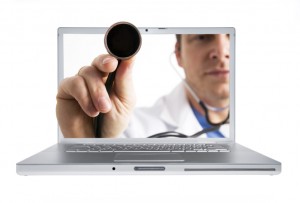The Structure of Predictions
I like to think about the future. So, in the past, I’ve written about scenario planning, prediction markets, resilience, and expert predictors. What have I learned in all this? Mainly, that experts regularly get it wrong. Also, that experts move in herds — one expert influences another and they begin to mutually reinforce each other. In the worst cases, we get manias, whether it’s tulip mania in 17th century Holland or mortgage mania in 21st century America. Paying ten times your annual income for a tulip bulb in 1637 is really not that different from Bank of America paying $4 billion for Countrywide.
I’ve also learned that you can (sometimes) make a lot of money by betting against the experts. The clearest description of “shorting” the experts is probably The Big Short by Michael Lewis.
I’m also forming the opinion that the reason we call people “experts” is because they study problems closely. They’re analysts; they study the details. Like college professors, they know a lot about a little. That may make them interesting dinner partners (or not) but does it make them better predictors of the future?
I’m thinking that the experts’ “close read” makes them worse predictors of the future, not better. Why? Because they go inside the frame of the problems. They pursue the internal logic of the story. Studying the internal logic of a situation can be useful but, as I pointed out in a recent article, it can also lead you astray. In addition to the internal logic, you need to step outside the frame and study the structure of the problem. If you stay inside the frame, you may well understand the internal dynamics of the issue. But, in many cases, the external dynamics are more important.
The case that I’ve been following is the cost of healthcare in the United States. The experts all seem to be pointing in the same direction: healthcare costs will continue to skyrocket and ultimately bankrupt the country. The experts are pointing in one direction so, as in the past, I think it’s useful to look in the other direction and predict that healthcare costs won’t climb as rapidly as in the past or may even go down.
Here are two interesting pieces of evidence that suggest that the experts may be wrong. The first is a report from the Altarum Institute which notes that 2012 represented the “…fourth consecutive year of record-low growth [in healthcare spending] compared to all previous years in the 50-plus years of official health spending data.” Granted, there’s a debate as to whether the slowing growth is caused by the recession or by structural changes but the experts (yikes!) suggest that at least some of the shift is structural.
The second piece of evidence is a report by Matthew Yglesias in Slate that documents the dramatic decline in spending for healthcare construction. Spending to construct new hospitals dropped precipitously in 2008 and has stayed low, even during the recovery. As Yglesias points out, construction spending is “the closest thing we have to a real-time forecast of what the future is going to look like.”
So, are the experts wrong? As Chou En Lai liked to say, it’s too soon to tell. But let’s keep an eye on them. Otherwise, we could be framed.
Sunday Shorts – 9
Interesting things I’ve spotted this week.
Boston Consulting Group highlights the most innovative companies of 2012. What makes them more innovative than your company?
What makes beautiful things beautiful? What’s the perfect ratio of fractals to non-fractals and how did Jackson Pollock know it? Maybe the secret of beauty is buried in our genes.
The rate of growth in health care costs has slowed dramatically over the past four years. Now why would that be?
Spending on health care construction has also dropped precipitously. See the most important health care chart that nobody is talking about.
Do you flush your Valium down the toilet? You could be causing fish to join gangs and drop out of schools.
What happens to the thermostat when it’s re-designed by the people who designed the iPhone and the iPod?
Round the Clock Healthcare — for Free?
When I go on a long bike ride, I usually wear a heart monitor. I like to know how hard my ticker is tocking. I also carry a smartphone with GPS in it. I like to know where I am … and where the nearest hospital is.
Let’s do a little mashup thinking. What if my heart monitor were connected to the phone and GPS? Here’s a scenario: the heart monitor notices that my heart is going haywire. It sends a signal to the phone. The phone uses GPS to locate the nearest hospital, sends an emergency call (perhaps using Amcom Mobile Connect*), along with my location. The hospital dispatches an ambulance to my GPS location to pick me up. It could save my life. And it’s all based on currently available technologies. All we have to do is mash them up.
A few weeks ago I wrote a post about how a strategist might think about healthcare costs. All the experts say that healthcare costs are bound to go up. In my experience, when all the experts point in one direction, it’s always useful to look in the other direction — just to make sure.
Several of my friends let me know that I was wrong — healthcare costs will continue to rise, if for no other reason than the government is involved. That wasn’t really my point. I was merely trying to illustrate strategic thinking. But now I am thinking about healthcare costs and I wonder if new technologies won’t have a huge impact. By and large, many of those technologies are already available. We just need to mash them up.
Here’s a simple example — the HAPIfork, which was introduced at this year’s Consumer Electronic Show (CES). The HAPIfork mashes up a fork, a timer, and (perhaps) an accelerometer to keep track of how fast you’re eating. HAPIfork measures the number of “fork servings per minute” and loads the data to a dashboard on your smartphone. You can keep track of how fast you’re eating. Apparently, eating slowly is better for you. You can adjust your behavior to be healthier.
I don’t think HAPIfork is going to revolutionize healthcare – but it hints at things to come. As the internet of things evolves, we’ll connect more and more sensors to monitor the word around us. We’ll also monitor our health with sensors that can inform us more precisely of our own condition. Am I getting dehydrated? Is my blood pressure up? Do I need to take corrective actions? A connected sensor could also alert my physician to potential trouble. Imagine, for instance, an internet toilet that uses chemical sensors to monitor your, um, output. If something is out of whack it lets you know. If something is really out of whack it lets your physician know.
Could connected healthcare reduce our costs in the long run? The real answer is that nobody knows. But it’s a question worth asking and technology worth pursuing. It’s an “unforeseen” solution that could just prove the experts wrong.
* I consult to Amcom and, yes, this is a shameless attempt to generate publicity for one of my clients.


